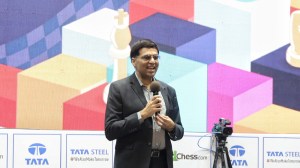New chips, flat screens to set Samsung’s future
Samsung Electronics Co Ltd. is poised to develop a range of new memory chips and ever thinner LCD screens to keep its lead as Asia’s te...

Samsung Electronics Co Ltd. is poised to develop a range of new memory chips and ever thinner LCD screens to keep its lead as Asia’s technology powerhouse over the next decade.
Samsung, the largest maker of memory chips and liquid crystal display (LCD) screens, is likely to bet on developing next-generation magnetic RAM and ferroelectric RAM chips and organic light-emitting diode (OLED) display technology. Unlike dynamic random access memory (DRAM), magnetic RAM chips keep their stored data after the power is switched off and provide faster computing speeds, while ferroelectric RAM chips have faster data processing speeds than flash memory and need less power.
Both technologies are expected to be used in devices ranging from smart cards to high-end mobile handsets.
“There’s a constant search for the perfect memory chip — one that retains data after the power is switched off, consumes less power, with very fast processing speeds. Samsung will probably be betting on that in the future,” said Peter Yu, an analyst with BNP Paribas.
Rival Hynix Semiconductor Inc and US-based Micron Technology Inc rank second and third in DRAM market share after Samsung.
A Samsung spokeswoman said the company was targeting research and development (R&D) spending of $5.27 billion this year.
The figure accounts for 9 per cent of Samsung’s expected 2005 sales.
Samsung is likely to focus on OLED, which is still in the early phases of development, analysts said. Unlike traditional LCDs, the most common type of flat screens used in televisions and computer monitors, OLED displays are paper-thin, more versatile and use less power.
“Since Samsung has invested so much in LCD technology, they would be the one to make the next-generation displays,” said Yu.
Samsung competes with second-ranked domestic rival LG Philips LCD Co Ltd and third-ranked Taiwan’s AU Optronics Corp in LCD production. LG Philips spends about 3 per cent of its 8 trillion won annual revenue on R&D.
So-called passive OLED displays, like small screens on cellphones and car audio equipment, are most common.
— Reuters


- 01
- 02
- 03
- 04
- 05





























